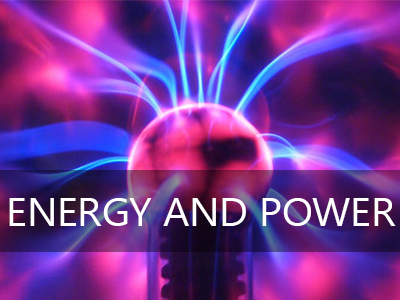Students generally feels drastic change and a lot of pressure when they enter in class 11th . Not only the previous chapters has been expanded to many folds but also new units like Heat and Thermodynamics, Rotational motion etc has been introduced.
At kenowit, we understands the students concerns and provides content to help the students in best possible way.
Faculties at Kenowit are IITians with a teaching experience of 10 plus years.
At kenowit, you will learn effective problem solving techniques . Faculties at Kenowit Identify weak areas of students and nurtures them accordingly

Chapter 1: Physical World What is physics ,Scope and excitement of physics ,Physics, technology and society ,Fundamental forces in nature ,Nature of physical laws
Chapter 2: Units and Measurements
Introduction ,The international system of units Measurement of length Measurement of mass Measurement of time
Accuracy, precision of instruments and errors in measurement
Significant figures
Dimensions of physical quantities
Dimensional formulae and dimensional equations Dimensional analysis and its applications
Chapter 3: Motion in a Straight Line Introduction ,
Position, path length and displacement
Average velocity and average speed ,Instantaneous velocity and speed ,Acceleration
Kinematic equations for uniformly accelerated motion Relative velocity
Chapter 4: Motion in a Plane
Introduction ,Scalars and vectors ,Multiplication of vectors by real numbers
Addition and subtraction of vectors – graphical method Resolution of vectors, Vector addition – analytical method ,
Motion in a plane ,
Motion in a plane with constant acceleration
Relative velocity in two dimensions
Projectile motion,Uniform circular motion
Chapter 5: Laws of Motion
Introduction, Aristotle’s fallacy ,
The law of inertia Newton’s first law of motion ,
Newton’s second law of motion,
Newton’s third law of motion ,
Conservation of momentum ,
Equilibrium of a particle ,
Common forces in mechanics
Circular motion ,Solving problems in mechanics
Chapter 6: Work, Energy, and Power
Introduction ,Notions of work and kinetic energy : The work-energy theorem
Work ,Kinetic energy
Work done by a variable force
The work-energy theorem for a variable force ,The concept of potential energy ,The conservation of mechanical energy ,The potential energy of a spring ,Various forms of energy , the law of conservation of energy Power
Collisions
Chapter 7: System of Particles and Rotational Motion Introduction ,
Centre of mass , Motion of centre of mass , Linear momentum of a system of particles , Vector product of two vectors ,Angular velocity and its relation with linear velocity
Torque and angular momentum ,Equilibrium of a rigid body ,Moment of inertia ,
Theorems of perpendicular and parallel axes.
Chapter 8: Gravitation
Introduction, Kepler’s laws,
Universal law of gravitation ,
The gravitational constant ,
Acceleration due to gravity of the earth
Acceleration due to gravity below and above the surface of earth , Gravitational potential energy , Escape speed
Earth satellite ,Energy of an orbiting satellite ,Geostationary and polar satellites Weightlessness
Chapter 9: Mechanical Properties of Solids
Elastic behaviour, Stress-strain relationship, Hooke’s law, Young’s modulus, bulk modulus, shear,
modulus of rigidity.
Chapter 10: Mechanical Properties of Fluids
Pressure due to a fluid column; Pascal’s law and its applications (hydraulic lift and hydraulic brakes). Effect of gravity on fluid pressure.
Viscosity, Stokes’ law, terminal velocity, Reynold’s number, streamline and turbulent flow.
Bernoulli’s theorem and its applications.
Surface energy and surface tension, angle of contact, application of surface tension ideas to drops, bubbles and capillary rise.
Chapter 11: Thermal Properties of Matter
Heat, temperature, thermal expansion; specific heat capacity – calorimetry; change of state – latent heat.
Heat transfer – conduction, convection and radiation, thermal conductivity, Newton’s law of cooling.
Chapter 12: Thermodynamics
Thermal equilibrium and definition of temperature (zeroth law of thermodynamics). Heat, work and internal energy. First law of thermodynamics.
Second law of thermodynamics: Reversible and irreversible processes. Heat engines and refrigerators.
Chapter 13: Kinetic Theory of gases Kinetic theory of gases: Assumptions, concept of pressure. Kinetic energy and temperature; rms speed of gas molecules; degrees of freedom, law of equipartition of energy (statement only) and application to specific heat capacities of gases; concept of mean free path, Avogadro’s number.
Chapter 14: Oscillations
Periodic motion – period, frequency, displacement as a function of time. Periodic functions. Simple
harmonic motion (SHM) and its equation; phase; oscillations of a spring – restoring force and force
constant; energy in SHM – kinetic and potential energies; simple pendulum – derivation of expression
for its time period; free, forced and damped oscillations (qualitative ideas only), resonance.
Chapter 15 -Waves
Wave motion. Longitudinal and transverse waves, speed of wave motion. Displacement
relation for a progressive wave. Principle of superposition of waves, reflection of waves, standing
waves in strings and organ pipes, fundamental mode and harmonics. Beats. Doppler effect.
Most of the students of class 11th faces much increase in the difficulty level as they move from class 10th . Now the subject needs a good grasp on the concepts as the questions are now mostly indirect and numericals type and along with that students also have to practice a number of questions. Many students also have started preparation for competitive exam. And all this makes class 11 th much difficult and creates mental buden on students.
Kenowit makes it easy for student by providing them - Lucidly explained content, teaching at student's individual pace, and discussion of every relevant types of questions and numericals required for students. Teachers at kenowit also guide students how to manage their school and competitive preparation in a planned way.
This course provides high quality engaging recorded videos by IITians and live interactive classes with personalised Guidance and Quality practice questions for class 11th .